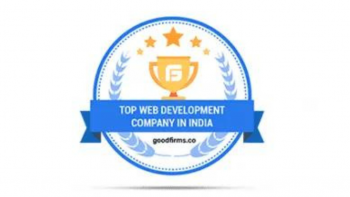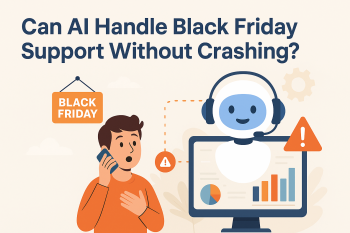In this guide, we’ll break down the fastest ecommerce platforms in 2025 based on real-world performance, setup requirements, and business fit.
Choosing the right ecommerce platform isn’t just about design or features anymore, it’s about how fast your website performs. According to a study by Portent, ecommerce conversion rates drop by an average of 4.42% with each additional second of load time between 0–5 seconds.
In 2025, consumers expect fast-loading sites across both desktop and mobile, and Google rewards websites that meet those expectations with better search visibility. That’s why selecting a platform that performs well technically is a smart, long-term decision.
In this article, we’ll break down the top 3 fastest ecommerce platforms in 2025—Shopify, WooCommerce, and Magento (Adobe Commerce)—and explore how each one performs in real-world conditions.
Why Ecommerce Speed Matters More Than Ever
Speed is no longer optional for ecommerce businesses. Here’s why it plays a major role in your site’s success:
- SEO Impact: Site speed is a confirmed ranking factor in Google’s algorithm, especially for mobile searches.
- User Experience: 1 in 2 users expect a page to load in under 2 seconds. Delays lead to frustration and higher bounce rates.
- Revenue: A one-second delay can reduce conversion rates by 7%, which can compound into significant revenue loss for high-traffic sites.
For ecommerce businesses, this means your platform must do more than “look good.” It needs to be fast, reliable, and capable of scaling with your growth.
1. Shopify: High Speed, Low Maintenance
Shopify continues to be a go-to platform for businesses looking for speed without the technical complexity. It’s a fully hosted solution, which means the company handles the backend infrastructure, performance optimization, and security.
Why Shopify Performs Well:
- Uses global CDN delivery to serve content faster based on user location
- Built-in automatic image compression and code minification
- Shopify’s newer Hydrogen + Oxygen stack enables fast, dynamic storefronts with server-side rendering
- No plugin overload, reducing risk of performance issues
Performance Highlights:
- Average load time: 1.3 seconds (independent tests by Backlinko)
- TTFB (Time to First Byte): Often under 200ms
- Google PageSpeed Score: 90+ on most mobile and desktop builds
Suitable For:
- Businesses of all sizes looking for a quick-to-launch ecommerce site
- Store owners who want fast performance without handling server-related tasks
- Teams without a dedicated developer, relying more on built-in features and themes
If you’re looking for a simple, fast, and scalable platform, Shopify continues to deliver on performance and ease of use in 2025.
2. WooCommerce: Speed with Customization
WooCommerce, the ecommerce plugin for WordPress, powers a large share of global ecommerce sites. Its flexibility is its biggest strength—but performance depends on how well it’s configured.
With the right hosting, theme, and optimizations, WooCommerce can match or even outperform other platforms in certain scenarios.
Key Speed Factors for WooCommerce:
- Hosting matters: Speed depends heavily on using a managed WordPress host (like Kinsta, Cloudways, or WP Engine)
- Choose lightweight themes like GeneratePress, Astra, or Kadence
- Use caching tools like LiteSpeed Cache, WP Rocket, or NitroPack
- Disable unnecessary plugins and scripts to reduce overhead
Performance Highlights (with optimization):
- Average load time: 1.5 to 2.2 seconds
- TTFB: ~300ms with optimized hosting
- Google PageSpeed Score: 80–90 on mobile, higher on desktop
Suitable For:
- Businesses that want more control over design, SEO, and server environment
- Developers or teams comfortable managing plugins, caching, and optimization
- Companies focused on content-driven ecommerce or hybrid business models (e.g., blogs + store)
WooCommerce isn’t fast by default, but when done right, it offers both speed and flexibility, making it a great option for technically inclined teams.
3. Magento (Adobe Commerce): Scalable and Performance-Ready
Magento, now Adobe Commerce, is known for handling large-scale ecommerce operations. In 2025, it continues to improve performance by shifting more stores to cloud-native architecture and supporting modern web technologies like PWA (Progressive Web Apps).
Why Magento Can Be Fast:
- Built-in Varnish cache and Redis support for backend optimization
- Adobe Commerce Cloud provides auto-scaling servers, CDN, and image optimization
- Magento PWA Studio enables fast-loading, app-like frontends
- Advanced database and indexing capabilities allow it to scale while maintaining speed
Performance Highlights:
- Average load time: 1.8–2.4 seconds (depending on complexity)
- TTFB: ~300ms (optimized hosting)
- Google PageSpeed Score: 70–85 (with PWA setup)
Suitable For:
- Enterprises or mid-large ecommerce operations
- Stores with complex catalogs, high traffic, or multi-region requirements
- Businesses needing tight control over integrations and workflows
Magento requires development expertise to perform well, but it’s a solid choice for those who need enterprise-grade performance with complete customization.
Quick Comparison: Fastest Ecommerce Platforms in 2025
| Platform | Avg. Load Time | Best For | Hosting Type | Developer Needed |
| Shopify | 1.3s | Small to mid-size stores | Hosted | No |
| WooCommerce | 1.5–2.2s | Custom builds, content-led stores | Self-hosted | Yes (for best results) |
| Magento | 1.8–2.4s | Large-scale, complex sites | Cloud / Self | Yes |
Which one of the fastest ecommerce platforms Should You Choose?
Choosing the fastest ecommerce platform depends on your business needs, technical resources, and growth plans. Here’s a simplified recommendation:
- Choose Shopify if you want a fast launch with minimal technical setup.
- Choose WooCommerce if you want control over every detail and have a developer on board.
- Choose Magento if you run a large operation with complex needs and a budget to invest in development.
All three platforms have the potential to deliver fast ecommerce experiences in 2025 – but how you use and optimize them plays a critical role.
Final Thoughts
Speed is no longer a bonus – it’s a requirement. A faster ecommerce website improves everything from SEO visibility to conversion rates and user satisfaction.
While Shopify, WooCommerce, and Magento top the list of fastest ecommerce platforms, each comes with different expectations in terms of resources, customization, and scalability.Choosing the right one is less about which is the fastest in theory and more about which one you can optimize effectively for your specific business model.
Written By
Author's Picks
- What Are the Benefits of eCommerce in 2025
- 04/02/2025
- How to Install WooCommerce in WordPress? | A Step-by-Step Guide
- 17/12/2024
- What is a Lean Canvas? Purpose, Key Metrics & Model
- 14/01/2025
Categories
- AI for Startups
- AI in Web Development
- AI Integration
- AI Platforms
- AI Prompt
- AI Tools
- AI Trading Software
- Android App
- Android vs iOS Development
- Angular
- API
- API Development
- App
- app development
- App Idea
- App User Feedback
- Application
- Artificial Intelligence
- Audit Services
- Automotive Industry
- Awards and Recognition
- Business Consulting
- Business Website
- Chatbots
- CRM
- CRM for Financial Advisors
- Custom CRM
- Custom SaaS
- Custom Website
- Customer Service
- dashboard design
- Developing a Mobile App
- Digital Business
- E-commerce
- EMR Integration
- Finance
- Financial Advisors
- Financial Advisors
- GIT
- Health Insurance
- iOS App
- iOS App Development
- IoT Mobile App Development
- IoT Platforms
- IT Audit Services
- IT Consulting
- IT Strategies
- Java Development
- Laravel
- Lean Canvas
- Learning Management System
- Logistics Apps
- Mobile App Development
- MVP
- Native App
- News Aggregator Site
- OTT
- Outsourcing IT
- Payment Gateway
- predictive analysis
- Product Launch Strategy
- Progressive Web App (PWA)
- Prototype
- Recommender Systems
- Ruby
- SaaS
- SaaS Application
- SaaS Business
- SaaS Company
- SaaS Development
- SaaS Product
- SaaS Project
- Sales Funnel
- SEO
- Shopping Cart
- Software Development
- SSL and TLS
- Startup Checklist
- Technology
- Tetradic Color Scheme
- UI/UX Design Company
- Unit Testing
- User Flow
- User Testing
- Web Development
- Web Performance Optimization
- website Maintenance Services
- Website Migration Service
- Website Speed Optimization
- WooCommerce
- WordPress





